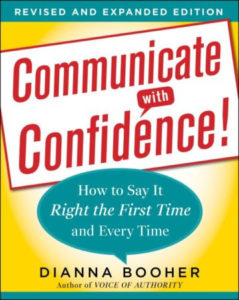


For twenty years, I was married to someone who struggled with depression, despite years of therapy, and in-patient care at psychiatric hospitals. At one point his psychiatrist offered this explanation to me, “It’s like he grew up in a forest with no emotional connection to another human being. That’s difficult to overcome at any age.”
That awareness has stayed with me as I’ve watched other people interact throughout my coaching and consulting career. Some people connect with others naturally; others do not. Like last week at a conference I attended.
At the start of the session while we were gathered around tables in groups of ten, the leader asked everyone to state their first name quickly. Then he posed a test: Would someone at each table see if they can recall everyone’s name. You’ve probably sat through that brief and typically effective ice breaker many times.
But what struck me this time at our table was that a couple of the people mumbled their name as if they didn’t intend to be heard. Later in the session, the facilitator asked the table groups to share an experience to illustrate his key point. These same two people sat mute, looking bored, offering no illustration of their own nor commenting on others’ examples.
At the end of the session, several from the table stood but lingered, chatting with one another. These same two noncommunicative people left immediately, going their separate ways. At lunch with the larger group gathered, same behavior.
Does that mean the policies at this sponsoring organization excluded these “non-connectors”? Hardly.
The group was diverse as to race and gender, and the environment seemed relaxed, cordial, and open. My point: Even people in the majority don’t always welcome inclusion in a group or activities—for any number of reasons.
Many reasons keep people tethered to their own thoughts and playthings:
—Timidity
—Preoccupation with their own projects
—Preoccupation with problems
—Fear of rejection
—Depression or illness
—A sense of unworthiness
—Boredom
—A dislike for or distrust of others
—Preference for solitude
First, keep in mind that body language that shouts “stay away” may be someone’s form of self-protection. It can be difficult to determine if that stay-away demeanor is actually begging for someone to break through the protective shield. Often it takes a specialist (trained consultant, facilitator, therapist) to make a connection, build trust, and establish rapport that encourages them to let down their guard.
But when no extraordinary or extenuating circumstances exist that dictate the need for a therapist in the room, you can create an open environment where people connect, contribute, and collaborate. Consider these fundamentals:
Again, all these techniques invite both the outgoing and the timid equal access to be heard.
With all the emphasis today on inclusion, keep in mind that sometimes it’s NOT about policies that eliminate, discriminate, or intimidate. Sometimes silence may simply mean someone has nothing meaningful to say.
Learn more about how to foster rather than force inclusion with Communicate With Confidence!: How to Say It Right the First Time and Every Time.
